Intestinal IL-22RA1 signaling regulates intrinsic and systemic lipid and glucose metabolism to alleviate obesity-associated disorders
- PMID: 38383607
- PMCID: PMC10881576
- DOI: 10.1038/s41467-024-45568-6
Intestinal IL-22RA1 signaling regulates intrinsic and systemic lipid and glucose metabolism to alleviate obesity-associated disorders
Abstract
IL-22 is critical for ameliorating obesity-induced metabolic disorders. However, it is unknown where IL-22 acts to mediate these outcomes. Here we examine the importance of tissue-specific IL-22RA1 signaling in mediating long-term high fat diet (HFD) driven metabolic disorders. To do so, we generated intestinal epithelium-, liver-, and white adipose tissue (WAT)-specific Il22ra1 knockout and littermate control mice. Intestinal epithelium- and liver-specific IL-22RA1 signaling upregulated systemic glucose metabolism. Intestinal IL-22RA1 signaling also mediated liver and WAT metabolism in a microbiota-dependent manner. We identified an association between Oscillibacter and elevated WAT inflammation, likely induced by Mmp12 expressing macrophages. Mechanistically, transcription of intestinal lipid metabolism genes is regulated by IL-22 and potentially IL-22-induced IL-18. Lastly, we show that Paneth cell-specific IL-22RA1 signaling, in part, mediates systemic glucose metabolism after HFD. Overall, these results elucidate a key role of intestinal epithelium-specific IL-22RA1 signaling in regulating intestinal metabolism and alleviating systemic obesity-associated disorders.
© 2024. The Author(s).
Conflict of interest statement
The authors declare no competing interests.
Figures
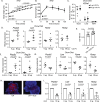
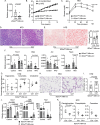
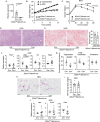

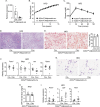

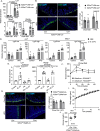
Similar articles
-
Cutting Edge: Intestinal IL-17A Receptor Signaling Specifically Regulates High-Fat Diet-Mediated, Microbiota-Driven Metabolic Disorders.J Immunol. 2021 Oct 15;207(8):1959-1963. doi: 10.4049/jimmunol.2000986. Epub 2021 Sep 20. J Immunol. 2021. PMID: 34544802 Free PMC article.
-
IL-22 receptor signaling in Paneth cells is critical for their maturation, microbiota colonization, Th17-related immune responses, and anti-Salmonella immunity.Mucosal Immunol. 2021 Mar;14(2):389-401. doi: 10.1038/s41385-020-00348-5. Epub 2020 Oct 15. Mucosal Immunol. 2021. PMID: 33060802 Free PMC article.
-
Nrg4 promotes fuel oxidation and a healthy adipokine profile to ameliorate diet-induced metabolic disorders.Mol Metab. 2017 Jun 21;6(8):863-872. doi: 10.1016/j.molmet.2017.03.016. eCollection 2017 Aug. Mol Metab. 2017. PMID: 28752050 Free PMC article.
-
Harnessing IL-22 for metabolic health: promise and pitfalls.Trends Mol Med. 2025 Jun;31(6):574-584. doi: 10.1016/j.molmed.2024.10.016. Epub 2024 Nov 21. Trends Mol Med. 2025. PMID: 39578121 Review.
-
Revisiting the role of IL-27 in obesity-related metabolic diseases: safeguard or perturbation?Front Immunol. 2025 Jan 21;15:1498288. doi: 10.3389/fimmu.2024.1498288. eCollection 2024. Front Immunol. 2025. PMID: 39906735 Free PMC article. Review.
Cited by
-
Hepatic IL22RA1 deficiency promotes hepatic steatosis by modulating oxysterol in the liver.Hepatology. 2025 May 1;81(5):1564-1582. doi: 10.1097/HEP.0000000000000998. Epub 2024 Jul 10. Hepatology. 2025. PMID: 38985984 Free PMC article.
-
Secreted proteins in treating metabolic dysfunction-associated steatotic liver disease: from bench towards bedside.Protein Cell. 2025 Aug 7;16(8):641-666. doi: 10.1093/procel/pwaf027. Protein Cell. 2025. PMID: 40243151 Free PMC article. Review.
-
Association analysis of gut microbiota with LDL-C metabolism and microbial pathogenicity in colorectal cancer patients.Lipids Health Dis. 2024 Nov 8;23(1):367. doi: 10.1186/s12944-024-02333-4. Lipids Health Dis. 2024. PMID: 39516755 Free PMC article.
-
Association of Inflammatory Factors with Cervical Cancer: A Bidirectional Mendelian Randomization.J Inflamm Res. 2024 Nov 30;17:10119-10130. doi: 10.2147/JIR.S493854. eCollection 2024. J Inflamm Res. 2024. PMID: 39639927 Free PMC article.
-
IL-22 promotes mucin-type O-glycosylation and MATH1+ cell-mediated amelioration of intestinal inflammation.Cell Rep. 2024 May 28;43(5):114206. doi: 10.1016/j.celrep.2024.114206. Epub 2024 May 11. Cell Rep. 2024. PMID: 38733584 Free PMC article.
References
MeSH terms
Substances
Grants and funding
LinkOut - more resources
Full Text Sources
Medical
Molecular Biology Databases
Miscellaneous

